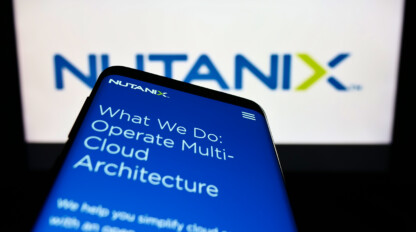Getting the Most out of Employee Engagement Surveys

Among the myriad of events impacting the workplace over the past few years (the pandemic, the work from home boom, the return to the office boom, quiet quitting, the great resignation – the list unfortunately goes on), one thing all employers can agree on is the importance of focusing on employee engagement in these times of uncertainty. A quick Google search will return link after link about the importance of measuring employee engagement through surveys. Makes perfect sense, right? As an employer, if I want to know what makes my employees feel engaged, I’m going to ask them.
However, launching an employee engagement survey is not a ‘check-the-box’ activity when it comes to understanding employee sentiment in the workplace. Employers can’t be performative when addressing this issue, because ‘checking-the-box’ stinks, and employees can smell that from a mile away. Employee engagement surveys can be a valuable tool for building trust within your organization IF they are implemented effectively.
Here are a few considerations to help you get the most out of your employee engagement survey.
Intent
Before beginning, look yourself in the mirror and ask: Do I care enough to consider others’ perspectives? Do I care enough to make changes in the way things are currently being done? Does my leadership and the C-Suite share in that sentiment? If the answer is no, you should reconsider surveying your employees, as this is likely being done as a ‘check-the-box’ exercise.
Deciding to utilize employee engagement surveys is a long-term commitment. When done right – they can result in building greater trust with your workforce and a better understanding of what engages them. When they are done wrong though, they are nothing more than a waste of everyone’s time.
Communication
Communicate to all survey stakeholders about the content, goals and methodology of the survey. Ensure that everyone, from employees to the C-Suite, understand the who, what, when, where and how of the survey. Transparency about what the survey will ask, confidentiality of responses and post-survey action is critical to building trust. This leads to better survey participation over time and better participation leads to a better understanding of employee engagement (aka – the most likely reason you are launching an engagement survey in the first place).
Keep Your Promises
After communicating, stick to the promises made regardless of results. For example, if you communicated that you will be sharing results, you must share results, even if the results were not what you had hoped for or shine light on something particularly ugly in your organization. This helps to build trust in the process, which only builds year after year and differentiate between an effective employee engagement survey process and a check-the-box exercise that lacks all value. If employees see that you are willing to be transparent, this will help to encourage more participation in the future.
Post-Survey Engagement
Engage your employees in post-survey activities. This may look different for each organization but including employees on some level in action planning or post-survey feedback sessions is an excellent step for maintaining trust. There are numerous ways to accomplish this, but even something as simple as talking to subsets of your team about how they interpret the results is a great step. Remember, real people’s perspectives went into responding to your survey. For you to try and distill its meaning alone is not going to yield successful post-survey actions. Partner with your employees, leaders and HR Team to help you understand the true meaning behind the results.
Consistency
Finally, be consistent with your post-survey actions. An employee engagement survey is not a one-and-done activity. It’s a living thing you need to care for and give attention to from the start of your survey to the beginning of your next one. Once you develop your action plan, provide consistent updates during All Hands Meetings, monthly employee newsletter, etc. Continue to communicate the results, what actions or changes have been informed by the results and when employees can expect to be surveyed again.
Remember – implementing an employee engagement survey is not just a ‘check-the-box’ activity. They are critical tools for building trust with your employees, understanding what engages them and measuring how that sentiment ebbs and flows throughout their tenure. Employee engagement surveys can prove extremely valuable, especially while running a business in times of uncertainty, but only when implemented effectively. Resist the urge to implement an engagement survey without first ensuring your and your leadership’s commitment to the entire process.
At ivision, we take employee feedback seriously. We pride ourselves on knowing what engages our team and adapting to reflect their priorities. Check out our open positions to experience this first-hand.



